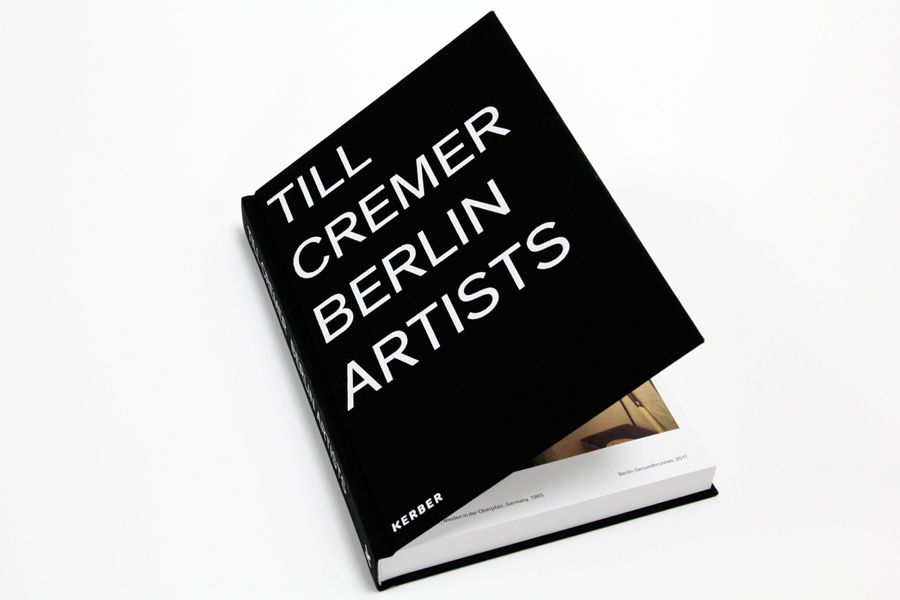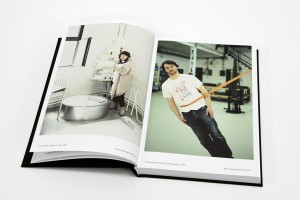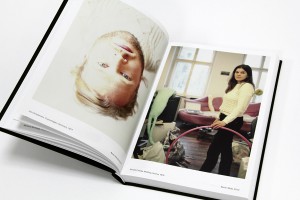BERLIN ARTISTS | 6 Fragen an Till Cremer
- Post By: AnKaKronmüller
- Date:
- Category: Interview, Photo Art

PLEASE scroll down for the English version.
Für Ihr Projekt BERLIN ARTISTS haben Sie 5 Jahre lang Künstler in Berlin fotografiert. Wie entstand die Idee dazu?
Ich glaube an die Kunst. Ich wollte ein Projekt machen, dass andere Menschen inspiriert und zeitgenössische Kunst zugänglicher macht. Persönlichkeit und Werk stehen meiner Meinung nach in direktem Zusammenhang und ich habe versucht, nicht nur den Menschen zu zeigen, sondern auch etwas von dem, was ihn antreibt und beschäftigt, oder den Umstand seiner Arbeit. Berlin war und ist ein idealer Ort, um solch eine Porträtserie zu machen.
Insgesamt haben Sie rund 500 Künstler fotografiert, eine beachtliche Zahl, die zeigt wie vielfältig die Berliner Szene ist. Wie haben Sie aus diesem Konvolut die Bilder für das Buch ausgewählt?
Zuvor fotografierte Künstler haben mir weitere Künstler für das Projekt empfohlen. Die Bilder für das Buch habe ich vornehmlich unter subjektiven, künstlerischen Aspekten ausgewählt und nicht danach, was der einzelne Künstler für Kunst macht. Die Porträts untersuchen künstlerische Persönlichkeiten, ungeachtet ihres Mediums, ihrer Generation, Herkunft oder Bedeutung für den Kunstmarkt oder die Kunstgeschichte. Gerne hätte ich noch ein paar Bilder mehr gezeigt, aber ich musste die Auswahl begrenzen.
Wenn man die Namen der Porträtierten liest, sind viele bekannte Künstler dabei. An welchen Orten haben Sie Ihre Kollegen aufgenommen und in welchem Zusammenhang stehen Orte und Künstler?
Die meisten Motive sind in den Ateliers entstanden. Für einzelne Inszenierungen haben andere Orte besser gepasst, um etwas über den Künstler und seine Arbeit zu erzählen. Der Ort war ein wichtiges Mittel, um Charakteristika zu finden und herauszustellen.
Teil der Bildunterschriften sind die Geburtsorte der Künstler, die heute alle in Berlin leben. Was verrät uns der Geburtsort? Warum ist dieser wichtig für das Projekt?
Der Geburtsort kann uns etwas über die Herkunft des Künstlers und seinen kulturellen Hintergrund verraten. Name, Geburtsort und Geburtsjahr, sowie Ort und Jahr der Aufnahme sind knappe Informationen, die neugierig machen und eine Geschichte beinhalten. In der Serie helfen diese Daten, die Künstler miteinander in Beziehung zu setzen. Ganz wenige Künstler aus dem Buch leben mittlerweile nicht mehr in Berlin.
Wie wichtig war es Ihnen, die Arbeiten in einem Buch zu versammeln?
Jede Fotografie ist ein individuelles Werk. Das Buch verleiht der Serie jedoch eine beständige Form und macht sie zugänglich. Neben einer Ausstellung kann ich mir kein besseres Medium vorstellen, um diese Arbeit zu präsentieren.
Welche Projekte planen Sie für die Zukunft?
Im Moment plane ich zwei fotografische Langzeit-Projekte, in denen wieder bestimmte Gruppen von Menschen im Mittelpunkt stehen. Für eines der Projekte müsste ich längere Reisen unternehmen, um die außergewöhnlichen Personen, um die es geht, aufzuspüren. Die andere Arbeit könnte ich gut in einem Studio in einer internationalen und jungen Metropole realisieren. Zu beiden Porträtserien sollen auch Filme entstehen.
Das Interview führte Michelle van der Veen.
——————————————————————————————————-
Publikation: BERLIN ARTISTS, September 2015.
herausgegeben von Till Cremer,
mit Texten von Till Cremer.
Gestaltung: Till Cremer.
ISBN: 978-3-7356-0084-4
——————————————————————————————————–
For your project BERLIN ARTISTS you spent 5 years taking photographs of artists in Berlin. How did this idea come about?
I believe in art. I wanted to do a project that inspires others and makes contemporary art more accessible. I believe you cannot separate an artist’s personality from the work they create. Rather than a simple portrait of an artist, I have tried to reveal something about what drives and preoccupies them, or some factor of their work. Berlin was and is an ideal place to create a series of portraits like this.
All in all you took around 500 photographs of artists: a remarkable number which shows the diversity of Berlin’s art scene. How did you decide which photos would make it into the book?
Previously photographed artists recommended further artists for the project. I selected pictures for the book based on my own subjective, artistic criteria, rather than on the type of art practised by the artist. The portraits examine artistic personages, regardless of their chosen medium, their generation, their origins or their significance in terms of the art market or art history. I would have liked to include more pictures, but I had to limit the selection.
You have created portraits of many well-known artists. Where did you take the photographs of your colleagues and what is the connection between location and artist?
Most photographs were taken in the artist’s own studio. Sometimes it was more fitting to stage the portraits in another location, to show something about the artist and their work. The location was a part of finding and highlighting key characteristics of the artist.
Each caption includes the birth place of the artists who now all live in Berlin. What does this birth place tell us? Why is it important for the project?
The birth place can reveal something about the artist’s origins and cultural background. Name, birth place, year of birth, as well as the year and location in which the photograph was taken is just enough information to arouse curiosity and to contain a story. In this series of portraits the dates help to place the artists in relation to one another. Very few of the artists in this book have left Berlin.
How important was it to you that these photographs should be collected into one book?
Each photograph is an individual work. Nonetheless, the book gives the series consistency and makes it more accessible. Apart from an an exhibition I can think of no better way to present this work.
What projects do you have planned for the future?
At the moment I am planning two long-term photographic projects, in which the focus will once again be on specific groups of people. For one of the projects I will have to make long journeys to track down the unusual subjects concerned. For the other a studio in a young, international metropolis will suffice. There are also plans to create films to accompany both of these portrait series.
Translation: Anja Bibby




[…] Der Berliner Künstler Till Cremer mit seinem frisch gedruckten Buch „BERLIN ARTISTS„. Das Interview zum Projekt gibt es hier. […]
[…] Auf die Frage, wie er aus den 500 Porträts die publizierten 300 ausgewählt hat, antwortete er im Blog des Verlags: […]